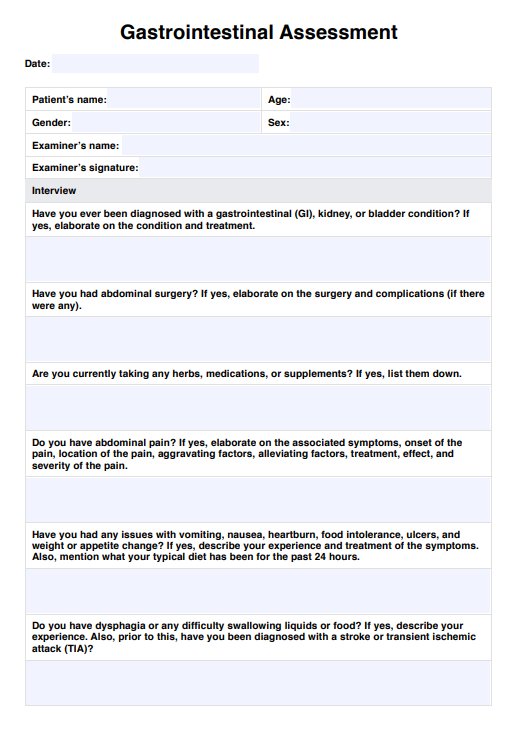Physicians who conduct head-to-toe assessments, which usually include a gastrointestinal assessment, and gastrointestinal system specialists such as gastroenterologists, will benefit from having a template for this assessment.

Gastrointestinal Assessment
Examine your patient's abdomen with ease with the help of our gastrointestinal assessment template. Click here to download a copy.
Use Template
Gastrointestinal Assessment Template
Commonly asked questions
You can use the template while examining your patient or checking their condition after surgery, medication, or other treatments.
How you will utilize our gastrointestinal assessment is entirely up to you. You can use it as a guide, reference, etc.
EHR and practice management software
Get started for free
*No credit card required
Free
$0/usd
Unlimited clients
Telehealth
1GB of storage
Client portal text
Automated billing and online payments











